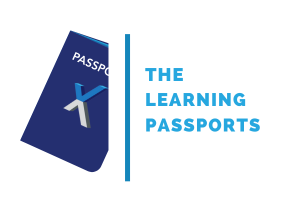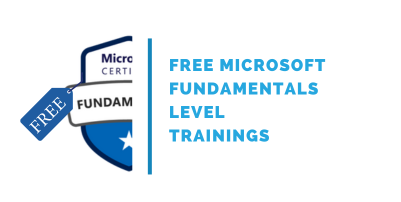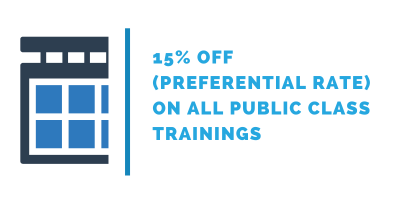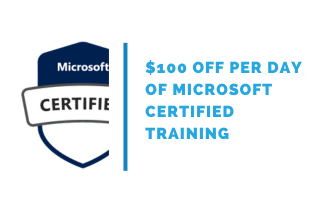
Microsoft Certified: Administering Microsoft Azure SQL Solutions (DP300)

This four-day Microsoft certified course provides students with the knowledge and skills to administer a SQL Server database infrastructure for cloud, on-premises and hybrid relational databases and who work with the Microsoft PaaS relational database offerings. Additionally, it will be of use to individuals who develop applications that deliver content from SQL-based relational databases.
This training is a comprehensive preparation for the DP-300: Administering Microsoft Azure SQL Solutions to earn the Microsoft Certified: Azure Database Administrator Associate.

Public class
2875$
Duration:
4 days / 28 hours
Private class
Virtual classroom
Minimum no. of participants: 5
4 days / 28 hours
Price on request
English or French
Training plan:
Administering Microsoft Azure SQL Solutions (DP-300T00)
- Describe Microsoft Intelligent Data Platform roles
- Understand SQL Server in an Azure virtual machine
- Design Azure SQL Database for cloud-native applications
- Explore Azure SQL Database Managed Instance
Module 2: Deploy IaaS solutions with Azure SQL
- Explain IaaS options to deploy SQL Server in Azure
- Understand hybrid scenarios
- Explore performance and security
- Explain high availability and disaster recovery options
Module 3: Deploy PaaS solutions with Azure SQL
- Explain PaaS options for deploying SQL Server in Azure
- Explore single SQL database
- Deploy SQL database elastic pool
- Understand SQL database hyperscale
- Examine SQL managed instance
- Describe SQL Edge
Module 4: Evaluate strategies for migrating to Azure SQL
- Understand compatibility level
- Understand Azure preview features
- Describe Azure database migration options
Module 5: Migrate SQL workloads to Azure SQL Databases
- Choose the right SQL Server Instance option in Azure
- Migrate SQL Server to Azure SQL Database offline
- Migrate SQL Server to Azure SQL Database online
- Load and move data to Azure SQL Database
Module 6: Migrate SQL workloads to Azure Managed Instances
- Evaluate migration scenarios to SQL Database Managed Instance
- Migrate to SQL Database Managed Instance
- Load and Move data to SQL Database Managed Instance
Module 7: Configure database authentication and authorization
- Describe Active Directory and Azure Active Directory
- Describe authentication and identities
- Describe Security Principals
- Describe database and object permissions
- Identify authentication and authorization failures
Module 8: Protect data in-transit and at rest
- Explore Transparent Data Encryption
- Configure server and database firewall rules
- Explain object encryption and secure enclaves
- Enable encrypted connections
- Describe SQL injection
- Understand Azure Key Vault
Module 9: Implement compliance controls for sensitive data
- Explore data classification
- Explore server and database audit
- Implement Dynamic Data Masking
- Implement Row Level security
- Understand Microsoft Defender for SQL
- Explore Azure SQL Database Ledger
- Implement Azure Purview
Module 10: Describe performance monitoring
- Describe performance monitoring tools
- Describe critical performance metrics
- Establish baseline metrics
- Explore extended events
- Describe Azure SQL Insights
- Explore Query Performance Insight
Module 11: Configure SQL Server resources for optimal performance
- Explain how to optimize Azure storage for SQL Server virtual machines
- Describe virtual machine resizing
- Optimize database storage
- Control SQL Server resources
Module 12: Configure databases for optimal performance
- Explore database maintenance checks
- Describe database scoped configuration options
- Describe automatic tuning
- Describe intelligent query processing
Module 13: Explore query performance optimization
- Understand query plans
- Explain estimated and actual query plans
- Describe dynamic management views and functions
- Explore Query Store
- Identify problematic query plans
- Describe blocking and locking
Module 14: Evaluate performance improvements
- Describe wait statistics
- Tune and maintain indexes
- Understand query hints
Module 15: Explore performance-based design
- Describe normalization
- Choose appropriate data types
- Design indexes
Module 16: Automate deployment of database resources
- Describe deployment models in Azure
- Automate deployment by using Azure Resource Manager templates and Bicep
- Automate deployment by using PowerShell
- Automate deployment by using Azure CLI
Module 17: Create and manage SQL Agent jobs
- Create a SQL Server maintenance plan
- Describe task status notifications
Module 18: Manage Azure PaaS tasks using automation
- Explore Elastic jobs
- Understand Azure Automation
- Build an automation runbook
- Automate database workflows by using Logic Apps
- Monitor automated tasks
Module 19: Describe high availability and disaster recovery strategies
- Describe recovery time objective and recovery point objective
- Explore high availability and disaster recovery options
- Describe Azure high availability and disaster recovery features for Azure Virtual Machines
- Describe high availability and disaster recovery options for PaaS deployments
- Explore an IaaS high availability and disaster recovery solution
- Describe hybrid solutions
Module 20: Explore IaaS and PaaS solutions for high availability and disaster recovery
- Describe failover clusters in Windows Server
- Configure Always-on availability groups
- Describe temporal tables in Azure SQL Database
- Describe active geo-replication for Azure SQL Database
- Explore auto-failover groups for Azure SQL Database and Azure SQL Managed Instance
Module 21: Back up and restore databases
- Back up and restore SQL Server running on Azure virtual machines
- Back up a SQL Server virtual machine
- Back up and restore a database using Azure SQL Database
Exclusives:
- One FREE attendance to the Microsoft Certified: Security, Compliance, and Identity Fundamentals (SC900) training - $695 value!
- One voucher to take the exam - $225 value!
- One year access to the class recording
- 180 days access to the lab environment after class
- Up to date courseware with Microsoft Learn
- Microsoft course achievement badge
Prerequisites:
Successful Azure Database Administrators start this role with professional experience in database management and technical knowledge of cloud technologies.
Specifically:
- Working with, maintaining, and developing with SQL Server
- Experience with Azure, such as deploying and managing resources
Credentials information:
Exam Characteristics
- Exam code: DP-300
- Exam Title: Administering Microsoft Azure SQL Solutions
- Exam Duration: 120 minutes
- Number of Questions: 40 to 60
- Questions Format: Multiple-choice, multiple-answer, scenario-based
- Passing Score: 700 out of 1000
- Cost: $0 (included in your training)
Exam Topics
- Plan and implement data platform resources
- Implement a secure environment
- Monitor, configure, and optimize database resources
- Configure and manage automation of tasks
- Plan and configure a high availability and disaster recovery (HA/DR) environment
- All details...
Follow-on trainings:
Audiences:
DP-300: Certification Overview
DP-300 is designed to evaluate a candidate's expertise in deploying and managing various database services on Azure, emphasizing practical knowledge of Azure SQL Database, Azure SQL Managed Instance, and Azure Cosmos DB. It covers a spectrum of topics, including database security, disaster recovery, performance tuning, monitoring, and automation of database tasks.
DP-300 Exam Preparation
Effective preparation for the DP-300 exam involves a comprehensive understanding of Azure database services, hands-on experience with Azure, utilization of official Microsoft learning materials, practice tests, and exploring practical case studies to reinforce knowledge and skills.
DP-300 Study Resources
Microsoft offers a range of study materials, including official documentation, learning paths, virtual labs, and practice exams, aimed at enhancing candidates' understanding of administering relational databases on Azure. These resources aid in familiarizing candidates with the exam objectives and Azure database administration best practices.
Is DP-300 Worth It?
The DP-300 certification holds significant value in the realm of Azure database administration. It validates one's expertise in managing Azure databases, enhancing career prospects, and making individuals eligible for roles involving Azure database administration
Conclusion
DP-300, Administering Relational Databases on Microsoft Azure, serves as a crucial milestone for database professionals looking to specialize in Azure database administration. Earning this certification validates skills in deploying, managing, securing, and optimizing Azure databases, positioning individuals as proficient Azure Database Administrators.
Whether pursuing a career as an Azure Database Administrator or aiming to enhance database management skills within the Azure cloud environment, DP-300 offers a comprehensive understanding of administering relational databases on Microsoft Azure.
Common Questions about DP-300 (FAQ)
Is DP-300 exam hard?
The difficulty level of the DP-300 exam can vary based on an individual's prior experience and familiarity with Azure databases. Adequate preparation, hands-on experience with Azure database services, and a thorough understanding of the exam topics can significantly impact the perceived difficulty of the exam.
What is DP-300 exam?
The DP-300 exam, officially known as "Administering Relational Databases on Microsoft Azure," is a certification assessment offered by Microsoft. It evaluates an individual's knowledge and skills in administering and managing relational databases within the Azure environment. The exam focuses on various aspects of Azure SQL Database, Azure SQL Managed Instance, and Azure Cosmos DB.
How long should you study for DP-300?
The duration for preparing for the DP-300 exam varies based on individual learning pace, existing knowledge of Azure databases, and familiarity with related concepts. On average, dedicating a few weeks to a couple of months for comprehensive study and hands-on practice is advisable to cover the exam topics thoroughly.
Does DP-300 have labs?
Yes, DP-300 (Administering Relational Databases on Microsoft Azure) includes hands-on labs that provide a practical experience to reinforce the acquired skills. These labs allow learners to apply theoretical concepts in a hands-on environment, fostering a deep understanding of relational databases on Microsoft Azure.
Contact us for more information on pricing::
Eccentrix
Office: 1-888-718-9732
E-mail: info@eccentrix.ca
130, King Street West, Suite 1800
Toronto, Ontario M5X 1E3
www.eccentrix.ca







